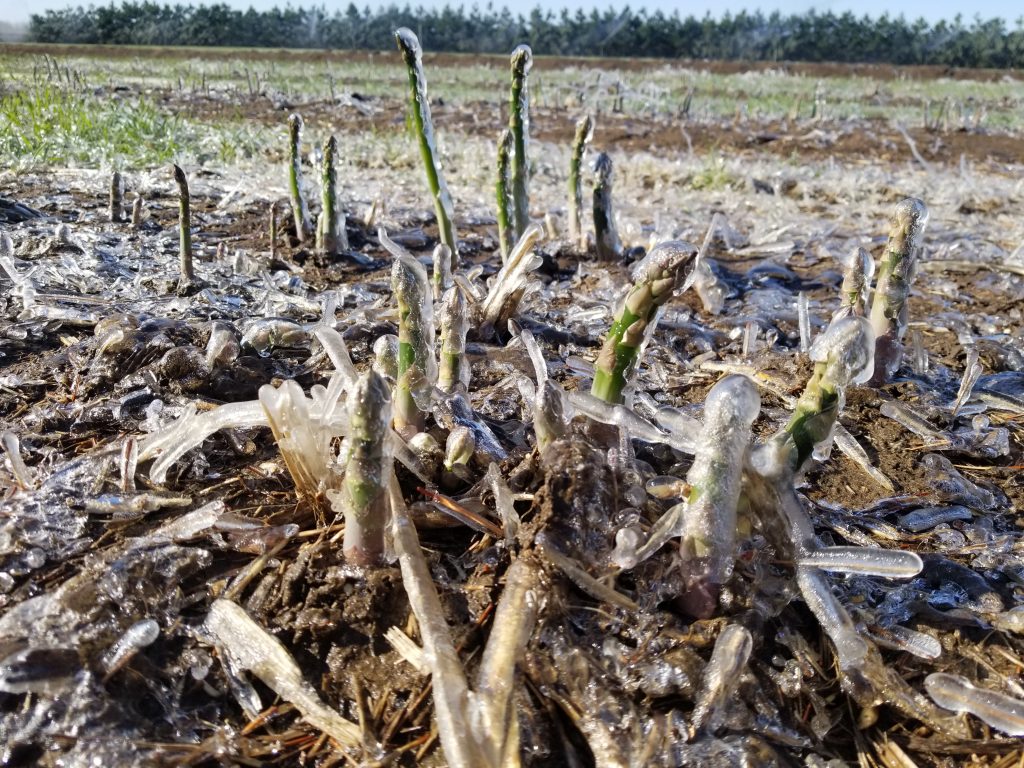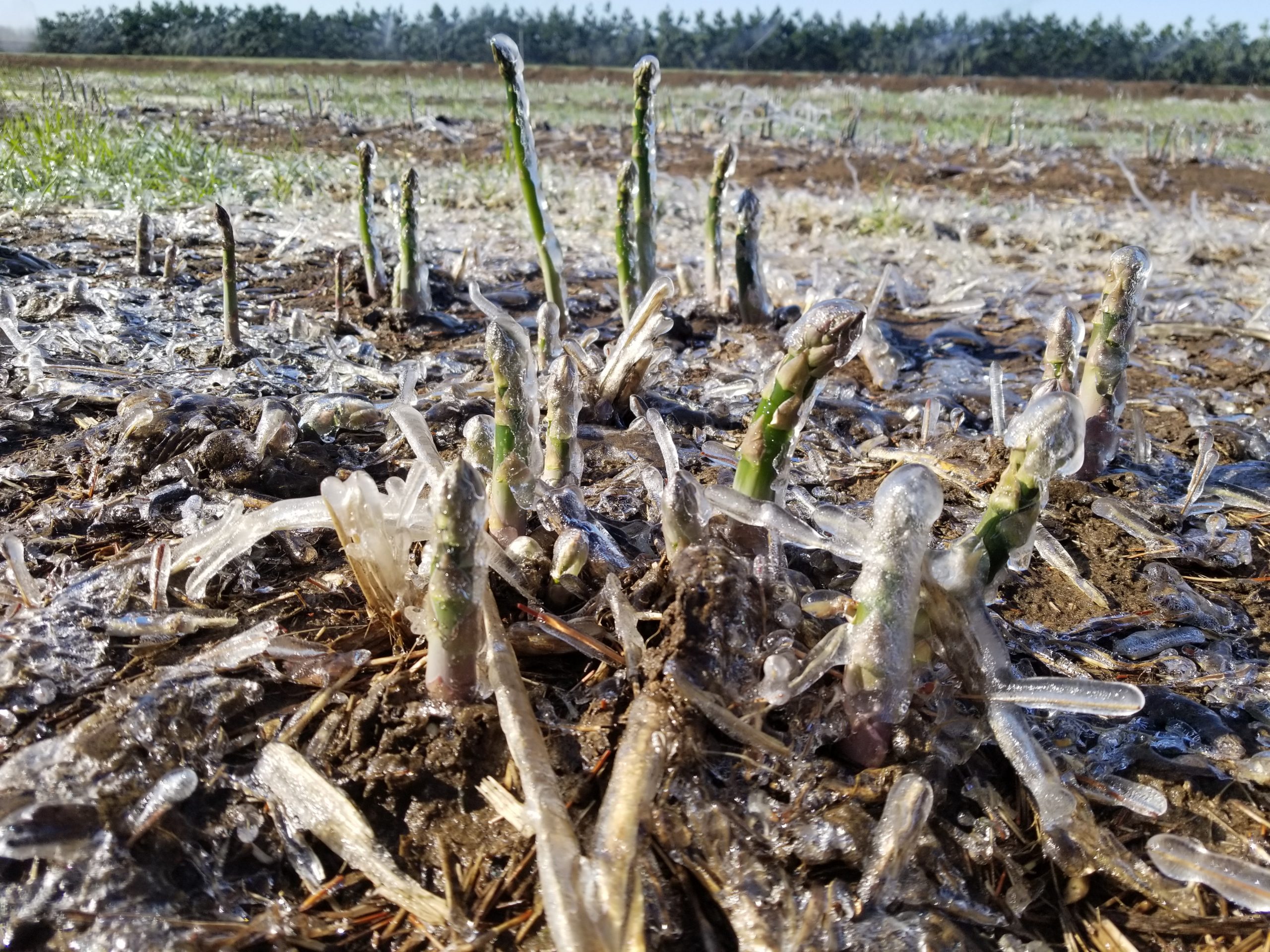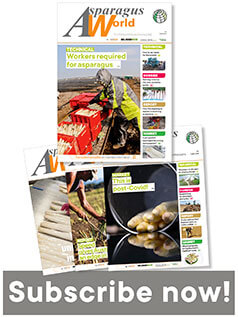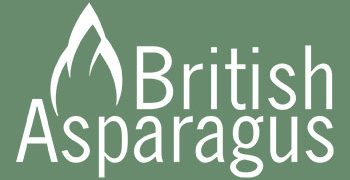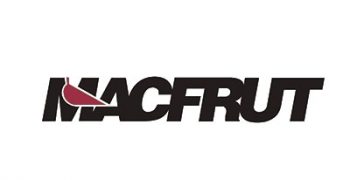Don’t freeze in the face of late frosts!
It has been well established that frost damage occurs when ice forms inside plant cells. According to research, at a temperature of -2.8˚C, around 50% of asparagus spears show damage (Arora & Wisniewski). To successfully reduce the risks of frost damage, a mix of passive and active measures must be used. Passive measures might include the choice of the site of the asparagus field, the varieties used based on their earliness and techniques that delay the emergence of the spears. Active measures might involve irrigation, wind machines and crop covers to conserve heat, add heat and mix in warmer air.
First and foremost, before engaging in crop protection against frost, we have to ask whether it is in fact worth it because, depending on the type of frost, your efforts might all be in vain. When a radiation frost hits, there is no wind (under 8km/h), the sky is clear, and the layer of cold air is only about 10 to 60 metres high. Under such conditions, if we can achieve thermal inversion, the frost protection will be effective. But when winds are stronger, the sky is cloudy and the layer of cold air is 150 to 1,500 metres above ground level, we are facing advection frost, which is much more difficult to protect against. Also, when using irrigation as protection, we must be aware of the dew point. Why is it important to know about the dew point? Because the greater the difference between the air temperature and the dew point temperature, the drier the air is. The drier the air, the more the irrigation water will evaporate. When water evaporates, it absorbs heat and cools the air around the shoots. Thus, when the air is drier (has a lower relative humidity) and/or the wind is greater, more litres of water per hectare are needed and the irrigation should be started earlier and at a higher temperature. Sufficient water volumes are also necessary. Insufficient irrigation can do more damage than not irrigating at all in some cases. Remember that irrigation should be maintained continuously until the ice begins to melt or when the crop is receiving direct rays from the sun.
Temperature at which it is recommended to start irrigation, based on the dew point
| Dew point | Air temperature |
| -1.1°C | 0° C |
| -1.7° C | 0.5° C |
| -2.8° C | 1.1° C |
| -3.8° C | 1.6° C |
| -4.4° C | 2.7° C |
| -5.5° C | 3.3° C |
| -6.7° C | 3.8° C |
| -8.3° C | 4.4° C |
The use of protection covers can provide crops with temperatures that are up to 6ºC or more above the outdoor temperature, depending on the manufacturer. Hoops are needed to protect the tips. Depending on the labour force and the acreage to cover on the farm, this might be a worthwhile strategy to consider. Another good option is the use of wind machines, which can cover 3 to 5 hectares, depending on the topography. But keep in mind that they become useless with winds of over 7km/h or in cases of advection frost.
Another alternative worth considering is irrigating the morning before a light frost, as moist soil absorbs heat better. At night, the accumulated heat will rise towards the surface and the plant canopy. Make sure that the first 10-15cm of soil is moistened. This method will work better if performed on a sunny day on bare soil. However, you should bear in mind that this method might save only the shorter spears, but it may represent a good option where water supply is insufficient or acreage is too large for protection with night-time irrigation.
If, despite everything, the asparagus suffers frost damage, we will often observe a delay before the crown develops new spears, leading to delays in the harvest schedule. Removal of the damaged spears from the field usually helps to shorten this gap and return to a bountiful harvest more quickly.
Effects of Rye on Emergence in Michigan
Through a grant supported by the Michigan Asparagus Research Board, scientists at Michigan State University (MSU) have been working with commercial asparagus growers on the sandy soils of west Michigan to evaluate the effects of winter rye (Secale cereale) on soil temperature and spear emergence. In Michigan, rye is commonly broadcast into senescing fern in the autumn and allowed to grow in early spring to protect soils and reduce wind abrasion of spears. Some growers let rye grow as long as possible in the spring in the hope of delaying emergence, avoiding potential frost damage and allowing more time for picking crews to make their way to Michigan. To better understand the impact of rye on spear emergence, the MSU team, led by Dan Brainard, set up field experiments on a grower’s farm, comparing soil temperature and spear emergence in plots terminated as early as possible in the spring (mid-April) versus those where rye was allowed to grow as late as possible (early-May). In both years of the experiment, they found that delayed termination of rye lowered peak soil temperatures by 1-2oC and delayed spear emergence by 1-3 days. By early-May, when the chance of a late killing-frost is about 25%, 10-15,000 fewer spears per hectare had emerged in the late-killed rye plots. By late-May, when risk of frost is minimal in Michigan, total spear emergence was the same in both treatments. The team is also evaluating the effects of plastic mulch on spear emergence, and using data from these experiments to develop a predictive model of spear emergence for Michigan growers based on soil temperatures.
Read also: 5 possibilities to manage late Spring Frost in Ontario







